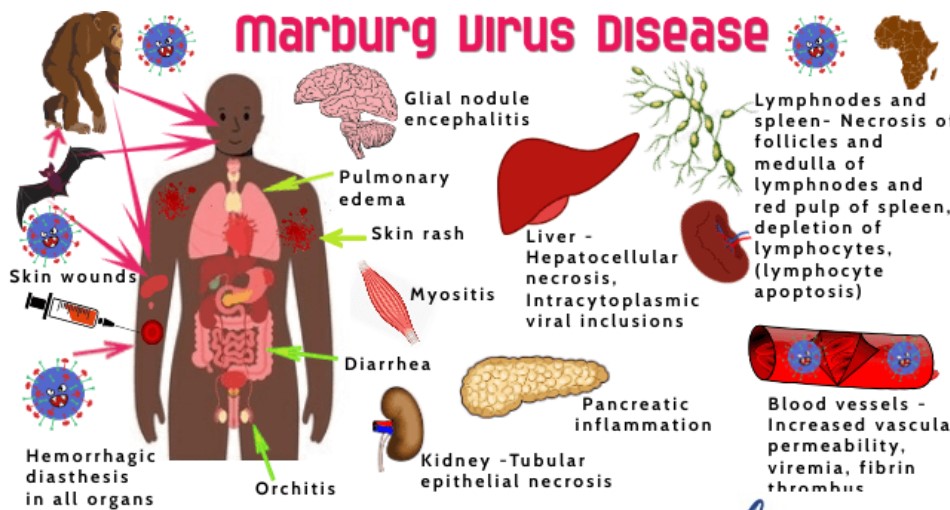Africa Reports ‘Unprecedented’ Marburg Virus Outbreaks, What’s Marburg Virus, How Deadly Is It?
Post By Diaspoint | May 4, 2023

The fatality rate of Marburg disease is around 50%. Case fatality rates have varied from 24% to 88% in past outbreaks depending on virus strain and case management, according to World Health Organization (WHO).
Africa is currently witnessing two outbreaks of Marburg virus in Tanzania and Equatorial Guinea, putting the continent in uncharted territory.
It is for the first time that two outbreaks of Marburg virus have occured at the same time, according to France 24. The Marburg virus is a relative of the Ebola virus.
However, unlike Ebola, there is no vaccine or established treatment for Marburg virus. It’s a relatively rare disease with a particularly hig mortality rate.
Here we explain what’s the status of Marburg outbreaks in Tanzania and Equatorial Guinea, what are Marburg symptoms, and why the disease is so concerning.
What’s Marburg virus, how does it spread?
The Marburg virus causes Marburg virus disease (MVD). The main animal host of Marburg is African fruit bat.
The Marburg virus spreads through bodily fluids. It can spread from bats to humans via urine, faecal matter, or saliva of bats, and can spread among humans through saliva, urine, faecal matter, semen, vomit, breast milk, etc. It has a particularly high mortality rate.
“The average MVD case fatality rate is around 50 per cent. Case fatality rates have varied from 24 per cent to 88 per cent in past outbreaks depending on virus strain and case management,” says World Health Organization (WHO).
Infection among humans can spready from direct contact with bodily fluid as wella as indirect contact with a surface contaminated with bodily fluid of the infected person, notes Medical News Today (MNT). This means that immediate family members and healthcare personnel are at the highest risk of human-to-human infection.
Historically, the people at highest risk for contracting MVD include family members and hospital staff who care for patients carrying Marburg virus and have not used proper infection prevention and control measures, said Dr. Jonathan Towner of the US Centers for Disease Control and Prevention’s (CDC) Viral Special Pathogens Branch.
He further told MNT, “Certain occupations, such as veterinarians and laboratory or quarantine facility workers who handle non-human primates from Africa, may also be at increased risk of exposure to Marburg virus,” he told MNT. “Exposure risk can be higher for those travelers visiting endemic regions in Africa who have contact with or come close proximity to Egyptian rousette bats present in caves or mines where these bats typically live.”
What are Marburg symptoms, how is it treated?
Read More from original source
